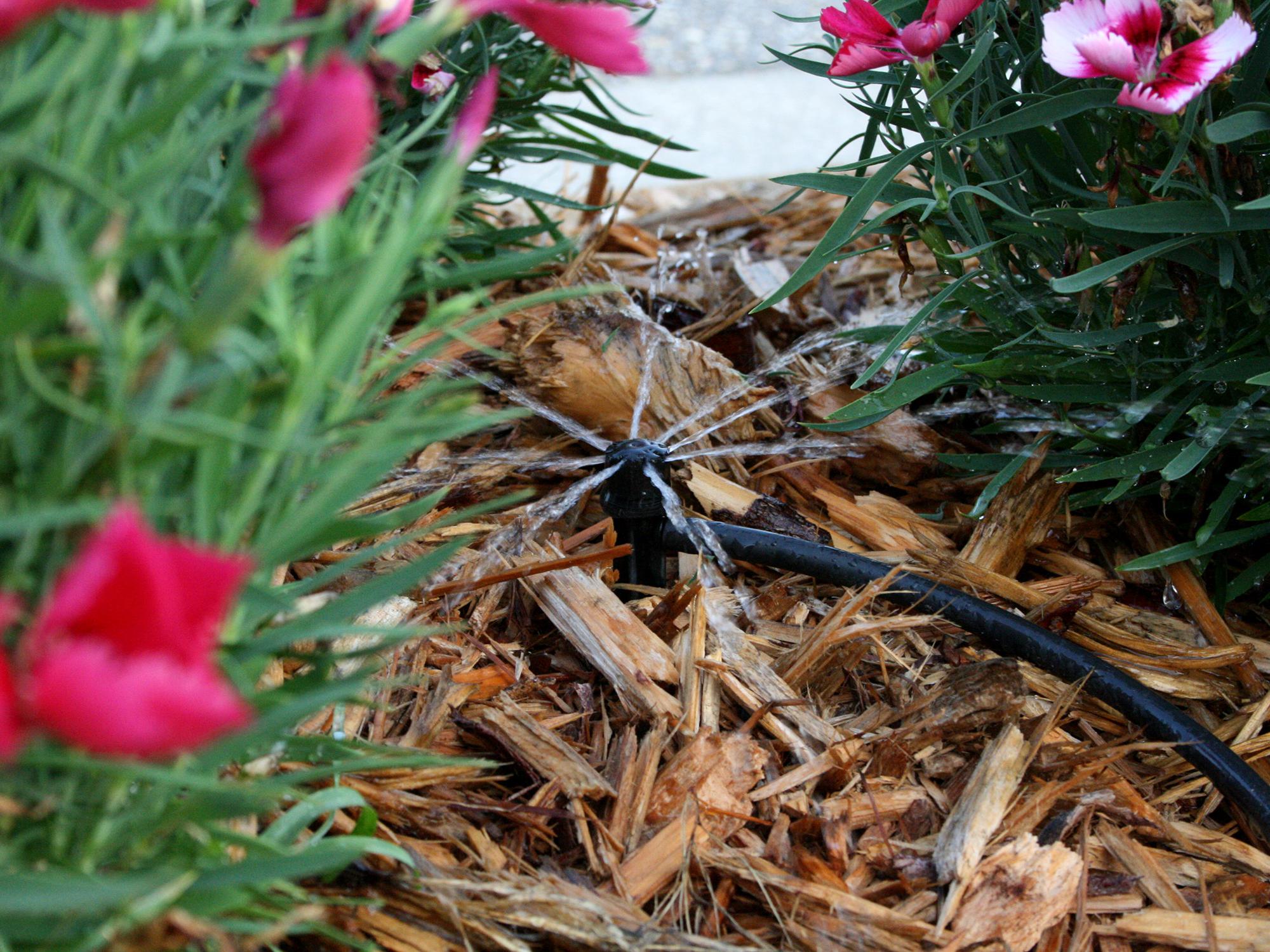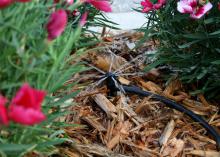Information Possibly Outdated
The information presented on this page was originally released on July 16, 2018. It may not be outdated, but please search our site for more current information. If you plan to quote or reference this information in a publication, please check with the Extension specialist or author before proceeding.
Know when and how much to water landscapes
As we continue to plow through this hot and humid summer, keeping our plants -- and ourselves -- hydrated is critical to maintaining the summer garden and landscape. As I write this column, it's 96 degrees with a heat index of 108. Whew!
Listening to or reading the weather forecasts, I'm reminded that we can expect the same thing every day. Conditions will be hot with some percentage of thunderstorm activity. This really sounds good, but the trouble is any rain activity is really spotty. If you are lucky enough to get some rain, it's usually short-lived. It's not nearly prolonged enough to get any meaningful moisture to our landscape plants.
Many common recommendations suggest applying 1 to 1 and a half inches of water per week. This doesn’t mean spread across seven days, but rather in one or two irrigations per week. Slow and steady wins the race.
I've observed homeowners standing out on a daily basis, hose in hand, watering the grass and such. My friend Ron Wilson, who has a weekly garden radio show, In the Garden with Ron Wilson out of Cincinnati, calls this type of watering "irrigation teasing." Don’t be a tease.
I think the best water application method if using micro-irrigation (also called drip or trickle irrigation) is applying the water directly to the root zones. This is a fantastic, and water-saving, method of irrigation.
Soaker hoses are another effective method of applying irrigation directly to the root zone of your landscape plants. The hose works by “sweating” along its entire length. These are good for vegetable garden rows or long flower beds. For turf areas, overhead irrigation -- though the least efficient -- is main the method of applying water.
The thing is, no matter the source, supplemental irrigation is needed and required to keep landscape plants healthy in the summer.
Soil conditions in the garden and landscape have a big influence on watering. Amending your landscape beds with 3 to 4 inches of good, composted organic matter will improve drainage. And don’t forget about the benefits of a good 2- to 3-inch layer of mulch after planting. The mulch will help the soil retain valuable moisture and keep the soil cooler.
Early morning is the best time to water. The air is cooler, and the soil can absorb water before the heat of the day. Watering during the middle of the day is not very efficient, as some of the water evaporates before it can do any good.
Plants -- like people -- have preferences, and knowing when and how much to water plants is one skill all gardeners need to have. Too much water encourages root rot problems; too little water leaves plants wilted and lifeless. I have learned that observation and experience are needed for keeping your landscape plants alive during a long, hot and dry summer.
I know it’s hot out there, but spend some time in the landscape and garden looking to see how the plants are handling the season. This way, you’ll be able to keep your landscape looking beautiful.



